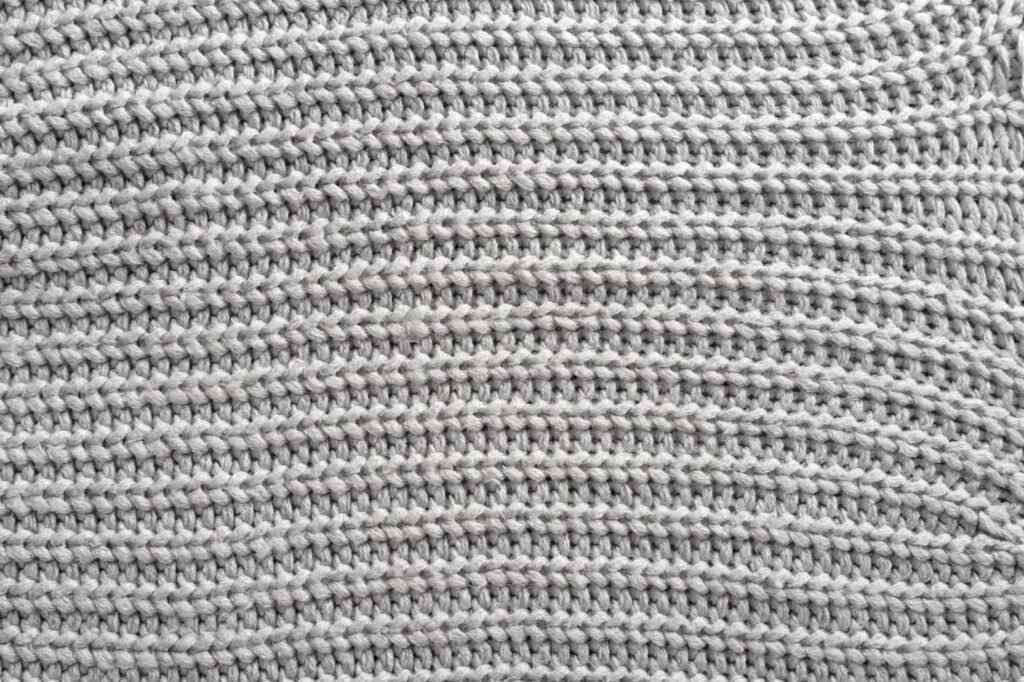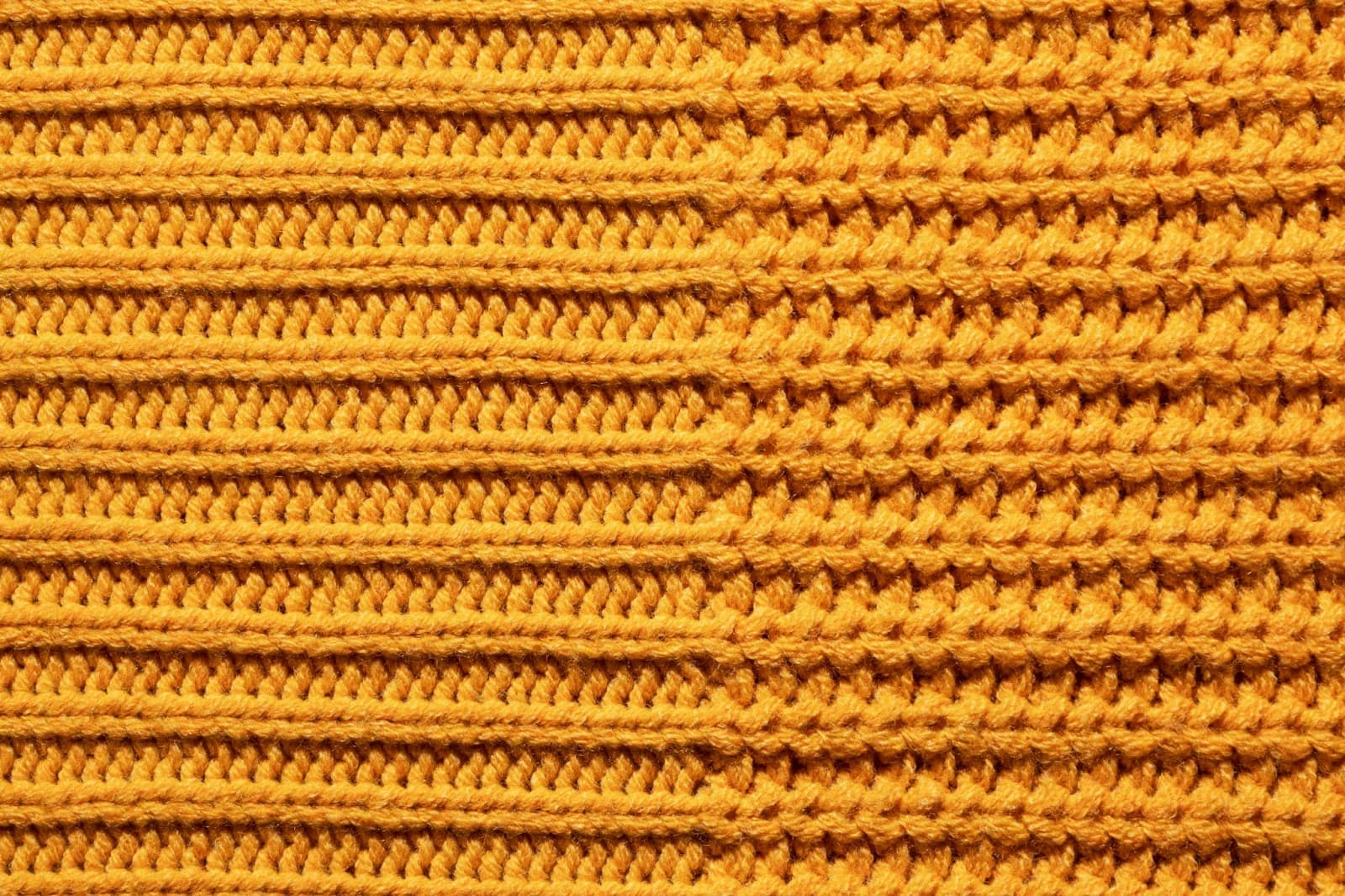Unlocking the Art of Knitting with Knit and Purl Techniques
Crafting with yarn and needles offers a delightful and adaptable pursuit, enabling the creation of exquisite textiles and clothing. Achieving expertise in the art of knitting necessitates grasping the essential building elements: the knit stitch and the purl stitch. These fundamental stitches serve as the cornerstone for an array of knitting patterns and artistic designs. Within the confines of this article, we shall delve into the crucial distinctions between the knit stitch and the purl stitch, facilitating a more profound comprehension of the intricacies inherent to the craft of knitting.
Distinguishing Knit and Purl Stitches: Unveiling the Nuances
Now that you’ve embarked on the journey of knitting, let’s delve deeper into the captivating world of stitches. Beyond the basics, it’s crucial to grasp the intricate variations that distinguish knit and purl stitches, as they unlock a treasure trove of creativity in your knitting projects.
1. Yarn Placement:
- Knit Stitch: When embarking on a knit stitch, you’ll find the yarn discreetly resting behind the needles, like a secret waiting to be unveiled. This subtle positioning is your gateway to the harmonious symphony of knitting;
- Purl Stitch: In contrast, the purl stitch brings the yarn to the forefront, a bold statement declaring its role in the weaving of textures. The yarn boldly faces the world, promising to add depth and character to your fabric;
- Tip: Achieve stunning textures by alternating between knit and purl stitches in your pattern. Experiment with different yarn placements to create unique designs.
2. Techniques of Needle Insertion
Knit Stitch: The Knit Stitch involves a delicate yet precise technique. Gently guide the right needle from the front to the back of the loop, mirroring the finesse of a painter’s brush sweeping across a canvas. This method is not merely a step in knitting; it’s the very essence that weaves the fabric of this craft. It’s essential in creating the smooth, classic texture that makes knitwear so appealing.
- Tips for Mastery: Maintain a consistent tension and angle for each stitch;
- Recommendation: Practice this stitch with different yarn weights to understand its versatility;
- Insight: The knit stitch is often the first one learned by beginners, laying the groundwork for more complex patterns.
Purl Stitch: Embark on the rhythmic journey of the Purl Stitch, where the right needle performs a captivating maneuver from the back to the front of the loop. This movement is reminiscent of a ballet dancer’s elegant spin, bringing a unique dimension to the fabric’s texture. The purl stitch, with its distinctive appearance, creates ridges and grooves, offering a contrast to the smoothness of the knit stitch.
- Tips for Improvement: Keep the yarn tension even to avoid uneven textures;
- Recommendation: Combine knit and purl stitches for diverse and interesting patterns;
- Key Point: Perfecting the purl stitch adds depth to your knitting skills, enabling the creation of intricate designs;
- Pro Tip: Focusing on the precision of needle insertion is crucial. This attention to detail ensures uniformity and aesthetic appeal in your knitting projects. Experiment with different needle sizes and materials to find what best suits your style and project needs.
3. Mastery of Wrap Direction
Knit Stitch: Visualize the yarn performing a graceful counterclockwise dance around the right needle. This captivating movement is the hallmark of the knit stitch, bringing a touch of elegance and fluidity to the fabric. The direction of the yarn wrap is instrumental in shaping the stitch’s structure and appearance.
- Guidance: Practicing with contrasting colored yarns can help in visualizing and perfecting this wrap technique;
- Insight: The counterclockwise motion ensures a tight and even knit, fundamental for durable and cozy knitwear.
Purl Stitch: In the realm of purl stitches, the yarn adopts an alternate persona, swirling in a clockwise direction around the needle. This twist is pivotal in constructing the mesmerizing texture of the purl stitch. The clockwise wrap differentiates the purl from the knit, giving it its signature bumpy texture.
- Technique Tip: Focus on the fluidity of your wrist movement for a smoother wrap;
- Insight: Mastering the clockwise yarn wrap is essential for achieving the symmetrical and consistent texture characteristic of purl stitches;
- Insight: The wrap direction, while seemingly a minor detail, is fundamental in knitting. It influences the texture, strength, and overall aesthetics of the finished product. Understanding and mastering these wrap techniques is essential for any knitting enthusiast aiming to create professional-quality work.
4. Resulting Fabric:
- Knit Stitches: As you tirelessly work your knit stitches, they reward you with a smooth and flat surface on the right side of your fabric. Flip it over, and you’ll discover a hidden world of bumpy textures on the wrong side, creating a tactile contrast;
- Purl Stitches: The purl stitches, on the other hand, reveal their charm differently. They gift you with a bumpy texture on the right side, where the yarn gracefully showcases its twists and turns. The wrong side, in contrast, embraces a tranquil, smooth surface that cradles your hands;
- Recommendation: Consider the interplay of knit and purl stitches in your design to create dynamic textures that elevate your knitting projects to an art form.
Mastering the Art of Distinguishing Knit and Purl Stitches: A Comprehensive Guide
Now that we’ve laid down the fundamental groundwork for knitting, it’s time to delve deeper into the craft and explore how to decipher knit stitches from purl stitches. This skill is indispensable for knitting enthusiasts as it empowers you to read your knitting like a pro, eliminating the need to painstakingly count stitches in repetitive patterns. Let’s get started with an in-depth exploration:
Understanding the Basics: Knit vs. Purl Stitches
To distinguish between a knit stitch and a purl stitch, remember this fundamental principle: A knit stitch forms a distinctive V shape, while a purl stitch creates a charming little bump. Armed with this knowledge, you can confidently navigate complex patterns without constantly referring to your instructions. Here’s how:
- Inspect the next stitch closely, focusing on its base;
- If you spot a bump at the base, it’s a purl stitch;
- If there’s a prominent V shape, it’s a knit stitch.
This principle is not limited to a specific knitting pattern; it’s universally applicable. Whether you’re working on a classic 2×2 rib stitch, a charming moss stitch, or a textured waffle stitch, this method will be your guiding light. In intricate patterns that span multiple rows, simply extend your gaze a row or two down to maintain accuracy.
Exploring the Synergy of Knit and Purl Stitches
The Harmonious Relationship Between Knit and Purl
Knitting, a craft of intricacy and detail, relies heavily on the understanding and application of knit and purl stitches. These two fundamental techniques are not simply contrasting elements; rather, they are complementary forces that create the foundation of various knitting patterns. This concept transcends the basic notion of opposition, highlighting how knit and purl stitches enhance and complete each other in the knitting world.

The Interplay in Stitch Patterns
- Knit and Purl Interactions: Each stitch, whether a knit or a purl, plays a pivotal role in shaping the texture and pattern of the knitted fabric. Their interaction is crucial in creating diverse designs;
- Increases and Decreases: A fascinating aspect of knitting is the relationship between increases and decreases in knit and purl stitches. For every increase technique applied on the right side of the fabric, there is a corresponding decrease technique for the wrong side, creating a balanced and symmetrical effect.
Practical Tips for Beginners
- Versatility in Techniques: When facing difficulty with a particular stitch, remember that knitting offers versatility. For instance, a challenging p2tog tbl (purl two together through the back loop) can be substituted with a k2tog tbl (knit two together through the back loop) on the following row, achieving a similar effect;
- Reading Your Knitting: Both knit and purl decreases leave distinct visual cues – a ‘V’ for knit and a ‘bump’ for purl. These markers are invaluable for tracking your progress and maintaining consistency in your work.
Mastering the Craft
- Foundation to Mastery: Grasping the essence of knit and purl stitches is not just a beginner’s step; it’s a cornerstone of mastering knitting. This understanding paves the way to explore advanced techniques and complex patterns with ease;
- Pattern Conversion: Proficiency in these stitches aids in converting patterns from in-the-round to flat knitting, broadening the range of projects you can undertake.
Recommendations for Further Learning
- Explore Varied Patterns: Experiment with different combinations of knit and purl stitches to understand their impact on texture and design;
- Practice Increases and Decreases: Regularly practice various increase and decrease techniques to become adept at creating symmetrical and intricate patterns;
- Join Knitting Communities: Engage with online forums or local knitting groups to share insights, tips, and experiences with fellow knitters.
By embracing the knit and purl stitches as foundational pillars of knitting, enthusiasts can embark on a journey of endless creativity and mastery, unlocking the full potential of this timeless craft. Also, dscover the magic of crafting with our captivating triangle shawl knitting pattern, your gateway to cozy elegance!
Conclusion
Mastering knitting and unleashing your creativity in crafting intricate designs, be it a cozy scarf or a complex sweater, necessitates a comprehensive grasp of the distinction between knit and purl stitches. These two foundational stitches serve as the building blocks for a vast array of patterns and textures, forming the very essence of knitting itself.
To embark on this creative journey, gather your knitting needles, an ample supply of yarn, and a dash of patience. By engaging in dedicated practice with these versatile stitches, you’ll soon discover the boundless potential they offer for breathing life into your knitting projects. So, let’s begin this exciting knitting adventure with enthusiasm and anticipation. Happy knitting!
